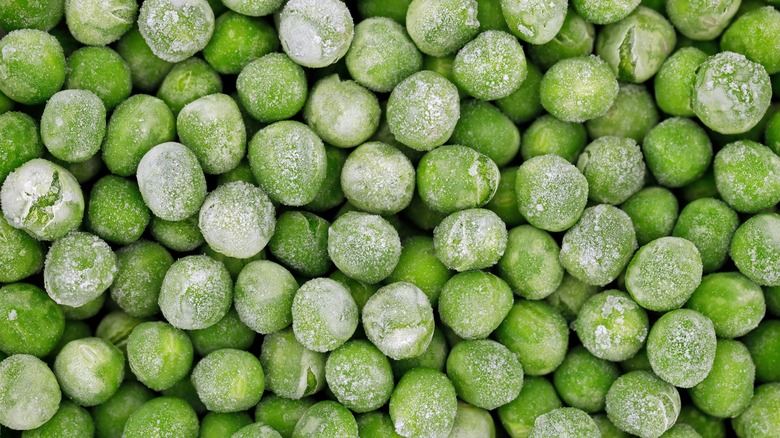Bobby Flay Prefers One Frozen Vegetable To Its Fresh Counterpart
Green peas are a staple frozen vegetable, and there's a good reason for this. Peas are frozen at their nutritional peak, suspending their sweetness in time, which re-emerges immediately once thawed — which is one of the reasons Bobby Flat says he prefers the frozen version of this legume.
While the jury is still out on whether frozen or fresh produce is better for you, frozen vegetables are safe to eat without added preservatives, so the flavor you unlock is often all natural. Additionally, fresh peas are very starchy, making them trickier to work with as their texture can become compromised and mushy. While this won't necessarily affect their taste immediately, any leftovers will succumb to moisture sooner than their frozen counterparts, altering the flavor.
Frozen peas are not necessarily cooked before freezing, though they are flash-steamed. This process makes them ready to eat upon thawing, so all it takes is some hot water (though you could always spike your frozen peas with white wine, if you're feeling fancy) and they're ready to go. Frozen peas will take a minute or two longer to steam than fresh ones, but that extra time makes a difference, as it can cause fresh peas to become mushy — the exact issue Bobby Flay dislikes.
When to use fresh and frozen peas
Just because fresh peas tend to get mushier sooner does not mean this is always undesirable. In fact, mushy peas are a classic British side dish and far easier to make at home with fresh peas. Paired alongside golden beer-battered fish and chips, fresh peas provide a welcome soft contrast to the crunch of the main dish. Not to mention, soft peas are a classic baby food thanks to their texture and nutritional value, making them a satisfying option for the whole family.
As far as snacks go, raw green peas are safe to consume and surprisingly filling, as they contain high levels of fiber and protein. Still, it's important to watch the volume. Raw peas contain antinutrients — compounds found in some foods that reduce the absorption of the food's own nutrients in the human body. In the case of raw peas, eating too many can cause bloating, so cooking them is always the safest option.
Frozen peas are better suited for meals like soups, curries, and pasta dishes. Their firmer texture holds up well in creamy dishes, and they tend to be sweeter than fresh peas, adding nuance to generally savory recipes like pot pies. Frozen peas may not always need to be boiled before consumption, though this will be indicated on the packaging. If a bag contains cooking instructions, those steps should not be skipped. Otherwise, they can usually be thrown directly into whichever meal you're making to cook alongside the other ingredients.


